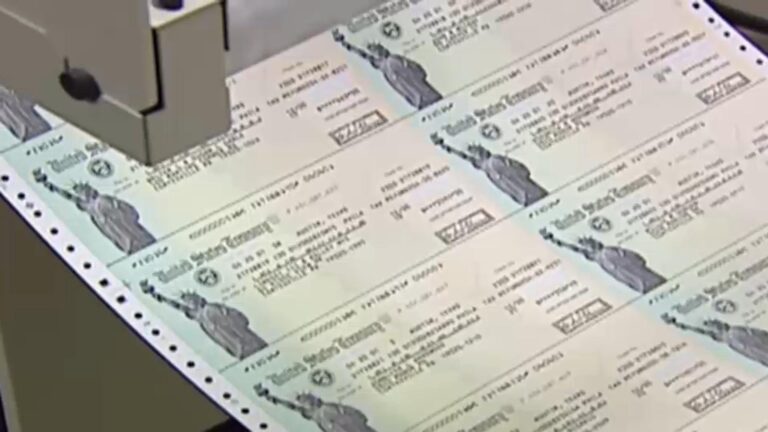Federal Payments Transition: Moving Beyond Paper Checks in the U.S.
Modernizing Federal Disbursements: The End of Paper Checks
The U.S. government is undertaking a major overhaul in how it distributes federal payments, signaling the gradual elimination of paper checks. This initiative is designed to enhance the speed, security, and efficiency of payments to individuals, businesses, and agencies nationwide. By embracing electronic payment methods, the government aims to reduce the delays and risks associated with mailed checks, such as loss or theft, while aligning with the growing digital finance landscape.
Key aspects of this modernization include:
- Adoption of Electronic Payment Systems: Direct deposits and prepaid debit cards will become the primary channels for federal payments.
- Enhanced Security Measures: Electronic transfers minimize fraud risks compared to physical checks.
- Improved Convenience: Recipients will benefit from quicker access to funds and streamlined payment tracking.
- Support for Transition: Resources and assistance programs will be available to help those unfamiliar with digital payment platforms.
| Payment Method | Typical Delivery Time | Security Level |
|---|---|---|
| Paper Checks (Current) | 5-7 Business Days | Moderate ŌĆō Vulnerable to Loss or Theft |
| Direct Deposit | 1-2 Business Days | High ŌĆō Encrypted Electronic Transfers |
| Prepaid Debit Cards | 1 Business Day | High ŌĆō PIN and Fraud Protection |
Effects on Social Security and Federal Benefit Recipients
Millions of Americans who depend on Social Security, Veterans Affairs benefits, and other federal payments will experience a fundamental change in how they receive funds. The governmentŌĆÖs push toward electronic payments is intended to provide faster access and stronger safeguards against fraud. However, this shift may present initial obstacles for certain groups, particularly elderly individuals and those without traditional banking relationships.
Important considerations for beneficiaries include:
- Maintaining Current Banking or Card Information: Ensuring accurate account details to prevent payment interruptions.
- Exploring Affordable Banking Solutions: Many federal programs now recommend no-fee or low-cost accounts to facilitate electronic payments.
- Understanding Fraud Protections: Electronic payments often come with advanced security features that help protect recipients from identity theft.
| Benefit Type | Estimated Electronic Payment Adoption | Support Services Provided |
|---|---|---|
| Social Security | 95% | Assistance with bank account setup |
| Veterans Benefits | 92% | Availability of prepaid debit cards |
| Supplemental Security Income (SSI) | 88% | Financial education and literacy programs |
This transition reflects a broader governmental effort to modernize services and reduce administrative costs, while emphasizing the importance of tailored support to ensure all recipients can adapt smoothly.
Steps to Enroll in Direct Deposit and Electronic Payment Systems
Switching to electronic payment methods is designed to be user-friendly and secure, enabling recipients to receive funds promptly. The process begins with verifying your bank or prepaid card information and enrolling through official government portals or benefit provider websites. Many agencies offer phone support and online tutorials to assist users throughout the enrollment process.
Recommended actions to facilitate the transition:
- Collect your bank routing and account numbers or prepaid card details.
- Access your benefit providerŌĆÖs secure online platform.
- Complete the enrollment steps for direct deposit or electronic payment options.
- Save confirmation details and monitor communications for verification.
- Check your bank or card statements to confirm receipt of your first electronic payment.
| Payment Method | Processing Time | Security Features |
|---|---|---|
| Direct Deposit | 1-2 Business Days | Encrypted Transfers |
| Prepaid Debit Card | Same Day to 1 Business Day | PIN Protection and Fraud Alerts |
| Mobile Wallet Payments | Instant | Tokenization and Biometric Authentication |
Addressing Challenges and Accessing Support During the Transition
Adapting to electronic payments can be daunting, especially for individuals with limited internet access, unfamiliarity with digital banking, or concerns about cybersecurity. Seniors, rural residents, and those without prior banking experience may face particular difficulties. Recognizing these challenges early and utilizing available support resources is essential for a smooth transition.
Available support channels include:
- Government Platforms: Official websites and local offices provide comprehensive guides and FAQs on electronic payments.
- Community Resources: Libraries and community centers often host free workshops to assist with online account setup and navigation.
- Banking Institutions: Many banks offer dedicated customer service to help clients transition to electronic payments securely.
- Non-Profit Organizations: Groups specializing in digital literacy and financial education offer tailored assistance for vulnerable populations.
| Common Challenge | Suggested Solution | Support Resource |
|---|---|---|
| No Internet Access | Utilize public Wi-Fi or visit community centers | Local libraries, community centers |
| Unfamiliarity with Online Banking | Participate in digital literacy classes | Non-profits, banks |
| Security Concerns | Consult bank security experts and enable two-factor authentication | Financial institutions |
Summary: Preparing for a Digital Payment Future
The U.S. government’s initiative to discontinue paper checks represents a pivotal move toward a more efficient and secure payment system. While this change promises faster transactions and reduced costs, it also necessitates that millions of Americans adapt to new digital payment methods. Staying informed, updating payment information, and leveraging available support services will be critical to ensuring a seamless transition. As the nation embraces this digital evolution, ongoing updates and guidance will be essential to help all recipients navigate the changing financial landscape.




